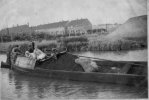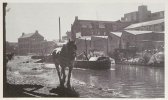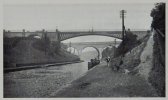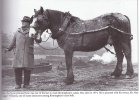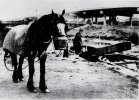Working boats
Brummie babby
second picA few more canal/horse based images that I have collected over the years trawling the web. I have no other information with them other than I set out below,
The first one is at Lifford Lane, Cotteridge, the second just states Birmingham canal, the third is the Navigation Offices on Paradise Street Wharf and the last is at the Fountain Pub Tipton.
This was taken in 1958 it shows Ben the boat horse towing a, T&S Elements of Farmers Bridge, day boat loaded with slack for GEC Witton loaded at Hollybonk basin in Willenhall. They are just passing the bungalows at Willenhall Lane bridge, Bloxwich on the Wyrley and Essington. On board are Charlie Foster and his son Horace, both boatmen working for Elements, also on board are Margaret and Jennifer, Charlies youngest daughters on a day off from school, possibly summer holidays.
Ben was a good 'oss and would backa away on his own on the trip, once when they loaded from Anglesey basin he took a 'wrong turn' at a bridge where someone was selling veg and had a good feed before Charlie or H could get off the boat to him. He also terrorised my nan, sticking his head in the back door and refusing to move until she gave him a slice of bread. As you can probably tell from that I'm Charlies grandson, I have this photo and the other three in the series in my collection.

